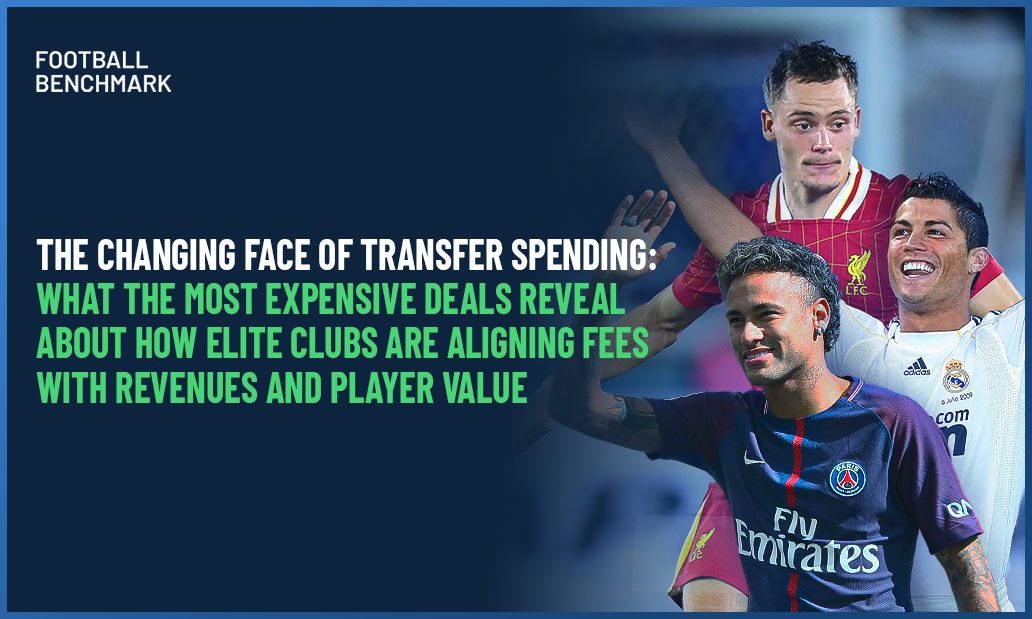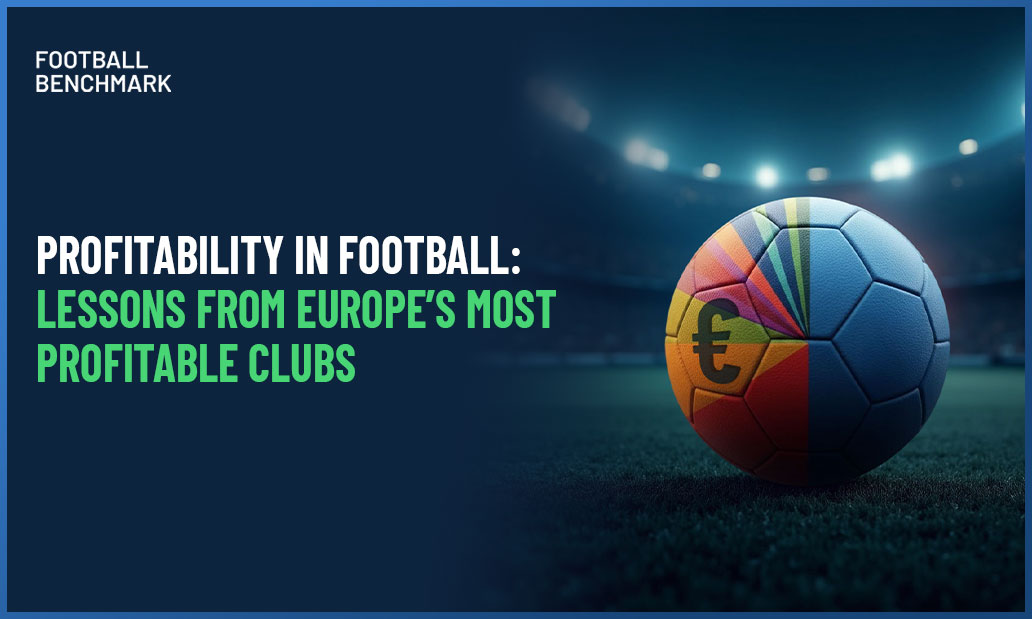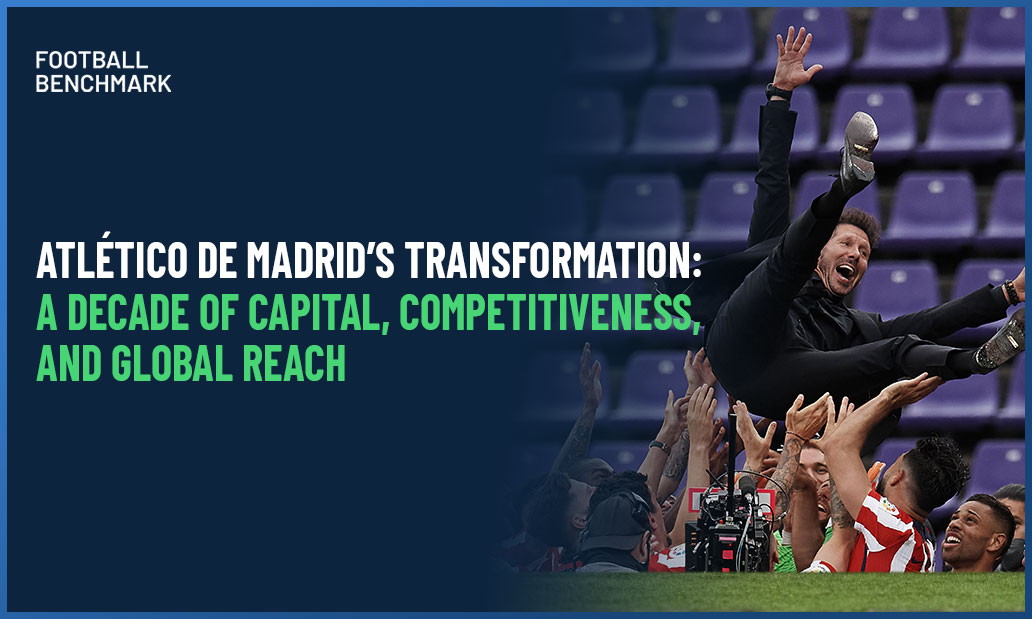
Each summer, transfer speculation dominates football discourse, often attracting more attention than what happens on the pitch during the season. But behind the excitement of who a club’s next Galáctico might be, a clear shift has taken place in how elite clubs approach transfer spending.
Over the past 15 years, there has been a move away from speculative, unbalanced deals towards more disciplined, revenue-aligned investment. While headline fees remain high, they increasingly reflect a club’s financial capacity and long-term planning. This evolution has been driven by regulatory pressure, rising revenues, and more sophisticated internal processes.
At the same time, transfer fees and player market values have begun to converge, signalling a more data-driven and structured approach to valuation. Clubs are not just paying for performance but for long-term potential and contractual value, making fewer exceptions and operating with more strategic discipline.
This article examines what the most expensive transfers each season reveal about how top clubs are aligning fees with both revenue and market value and what that tells us about the modern transfer market.
How top transfers compare to club revenues over time
The modern transfer market reached its peak intensity in the 2017/18 season, when Paris Saint-Germain activated Neymar’s release clause to complete a €222 million move from Barcelona, a deal that amounted to 46% of the club’s annual operating revenue. The transfer didn’t just break records; it reset them, prompting clubs and agents across the football ecosystem to recalibrate expectations overnight. It also marked a period of inflated, often speculative spending at the very top of the market.
In recent seasons, the behaviour of buying clubs has changed notably. Although transfer fees have remained high in absolute terms, their weight relative to club revenues has become more consistent. Over the last five completed seasons, the most expensive transfer each year has represented between 17% and 22% of the acquiring club’s revenue. These include Enzo Fernández to Chelsea (21%), Jack Grealish to Manchester City (18%), Declan Rice to Arsenal (22%), Julián Álvarez to Atlético Madrid (17%). This summer’s biggest move at the time of publication, Florian Wirtz to Liverpool for €125 million, follows the same pattern. While Liverpool’s 2024/25 financials are not yet available, the club’s 2023/24 revenue of €715 million provides a reasonable proxy, placing the transfer at 17% of revenue.
Clubs are still prepared to make significant investments in top-tier talent, but they are doing so in proportion to their financial scale. The most expensive deals are no longer outliers that stretch or exceed 35% of club turnover.
Looking further back reinforces the extent of this shift. When Real Madrid signed Luís Figo and Zinedine Zidane at the dawn of the Galácticos era, those transfers accounted for 51% and 56% of the club’s revenues, respectively. At the time, these signings transformed the transfer market, elevating the cultural and commercial role of transfers. Today, while the spectacle remains, the financial logic has changed.
The three highest fee-to-revenue ratios since the 2009/10 season all involve Paris Saint-Germain - Neymar (46% in 2017/18), Pastore (42% in 2011/12), and Mbappé (34% in 2018/19). These transfers not only underline the club’s ambition since the takeover of Qatar Sports Investments but they also shaped another transformative period in the transfer market. Neymar’s move doubled the previous record and recalibrated expectations across the industry. In its aftermath, €100 million transfers became a regular occurrence, even for less experienced players considered to have high potential.
João Félix’s €127 million transfer to Atlético Madrid in 2019/20 (34%) also ranks highly but such instances have become less common in the five years since. Interestingly, Atlético committed to pay €7 million more than the release clause, in order to pay a large sum of the amount in instalments.
How transfer fees compare to player market values
A growing trend in recent years has been the closer alignment between transfer fees and estimated market values, a shift that reflects more structured, data-led decision-making at the top end of the game.
Declan Rice’s €117 million move to Arsenal in 2023/24 came with a 21% premium over his Football Benchmark’s estimated contract market value of €97 million. Julián Álvarez’s €75 million switch to Atlético Madrid in 2024/25 came at a 25% discount. Florian Wirtz to Liverpool for €125 million, came at a 13% discount to his estimated value of €144 million, further reinforcing the trend of greater alignment between price and underlying valuation.
However, in this context, it is always important to highlight that price and value are two different concepts: price is what a person pays for a given product or service, whilst value is what any given product or service is worth. In a perfect market, in which all actors behave rationally and prudently, the price and value of a good or a service would overlap. However, actual transfer fees in football are often distorted by several factors, including: terms of release clauses; financial/sporting context of the selling & buying club, combined with the fact that the transfer market is not always open; the willingness of a player to leave or join a club; league-specific rules and regulations; the emotional dimension often involved in a transaction.
By contrast, historical deals often involved far greater divergence in terms of margins between fees and values. Javier Pastore’s 2011/12 move to PSG commanded a fee double his estimated valuation. Such deals were not just sporting decisions but strategic statements, often aimed at brand building and market disruption.
This evolution in transfer behaviour has occurred alongside a broader shift in how player value is assessed across the elite tier. According to the latest update from Football Benchmark’s Player Valuation Platform, a record 21 players are now valued at over €100 million, more than ever before. The average value of the top 100 players globally has risen from €78 million in 2019 to €87 million in June 2025. This trend reflects the growing depth of high-value talent in the game, driven by earlier player transition to the first team, longer contracts, and enhanced commercial potential.
Clubs are now treating top players as long-term assets, with valuation increasingly tied to contract length and future value, not just current performance. While regulatory frameworks and improved data have driven a more rational approach to valuations, competition for elite talent has intensified. With top players concentrated in a small number of clubs, the limited pool of potential signings fuels bidding wars, meaning premiums remain high and a persistent gap between market price and underlying value is likely to endure.
Why transfer spending is becoming more strategic and financially aligned
The modern transfer market remains ambitious, but it now operates within a more disciplined financial framework. While €100 million-plus deals are no longer exceptional, they are increasingly expected to reflect the buying club’s financial capacity and the estimated fair market value of the player. This gradually developing alignment marks a structural shift driven by rising revenues, stronger internal governance, and the growing impact of UEFA’s Financial Sustainability Regulations.
Crucially, this evolution hasn’t suppressed investment but has encouraged smarter, more strategic activity. Clubs remain active and competitive at the top end of the market, but decisions are now framed by long-term planning, contract value, and data-backed assessment, not just short-term ambition. The gap between price and value is narrowing and transfer activity today is as much about sustainable performance as it is about sporting impact.
At Football Benchmark, we work closely with leading clubs, investors, and football stakeholders to understand these dynamics. Our intelligence platforms and advisory services support data-driven decision-making across player valuation and financial planning, enabling our partners to navigate a complex and competitive market with confidence.



